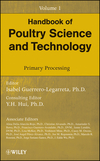Maximizing yield in the processing of meat and poultry is crucial for boosting operator revenues. While such factors as the amount of external carcass fat, carcass muscularity and aging all affect yield, mastering superior cutting equipment and techniques is crucial for getting the most product from an animal, analysts say.
“Yield is everything and can translate to millions of dollars for processors whether they are cutting primals or portioning products for foodservice,” says Dana Hanson, extension meat specialist and associate professor in food science in the Department of Food, Bioprocessing and Nutrition Sciences at North Carolina State University, in Raleigh.
He says, for instance, that a large bacon operator could generate millions of additional dollars annually by increasing yield from just one-half percent to 1 percent during slicing.
“Yields greatly impact processors’ bottom lines,” says Jeff Savell, professor of meat science in the Department of Animal Science at Texas A&M University, in College Station. “Industries that convert raw materials into finished goods rely on conversion rates that are as high as possible to remain competitive in the marketplace.”
Evolving cutting technologies allow processors to cut costs and waste while improving red meat quality and enhancing plant safety, particularly when they replace manual labor with automation, according to McKinsey and Co., a New York-based global management consulting firm, in a 2020 meat processing report.
With wages increasing in the labor-intensive meat processing sector, there are big incentives for operators to invest in technology. “Those that have done so have trimmed labor costs, improved yields and cut food waste,” McKinsey reports
But it can be difficult to use robotics or other automation because meat is not firm and changes shape during processing. Getting precise, consistent cuts also is challenging because each carcass is unique. “Waste is so expensive, especially for beef, that machines must reach accuracy exceeding 99.5 percent,” McKinsey says.
A crowd of cutting-edge equipment
Computerized visioning equipment, robotics and waterjet cutters are among the cutting technologies processors are increasingly using to enhance yields and operating efficiencies, Hanson says. A waterjet cutter, for instance, creates little waste because of its small cut. The machinery also typically requires less down time for maintenance because there is no need to sharpen blades or to eliminate the bacteria that can transfer from a meat blade to the proteins.
Such technologies are game changers for operators that are sensitive about increasing yields, Hanson says, adding that robotics and other automated cutting systems are particularly effective when there is little need for machine adjustment during processing because of consistency in meat size and weight.
Poultry processors also are using 3D imaging systems to optimize yields, according to the Business Research Co., a London-based market research and intelligence firm. The technology models the poultry bird and uses sensors and actuators while taking images and measurements to determine the best position for cutting before the bird is put under the vision system, the company says.
While near-infrared sensors ascertain the amount of meat and bone present in the bird, vision analysis enables the system to perform optimal cuts for each bird regardless of the size and shape, the company reports, adding, “it is a data-driven process which maximizes the yield and minimizes per-unit cost for poultry meat processing.”
Weigh the risks and rewards
Adapting automated cutting systems can be risky, McKinsey reports. “Automation will shift costs from more flexible manual labor to more fixed maintenance costs. An automated system is less prone to errors, but those that do occur are significantly more costly than those created by workers,” according to the report.
While automation will make the workplace safer, it also will require workers to improve their skills to operate new equipment. “Those that put off automation will find themselves at potentially fatal cost disadvantages. However, to take full advantage of the automation, executives must understand its impact on yields and labor-machine cost trade-offs, as well as consider committing to working with equipment suppliers to get early access to more advanced technology,” the McKinsey report shows.
Automated cutting systems are increasingly attractive during the COVID-19 pandemic because of operators’ interest in reducing the proximity of workers to one another, Hanson says.
There are circumstances, however, where using workers to cut meat and poultry manually is preferable to automation, says Robert Delmore, a professor in the Department of Animal Sciences at Colorado State University, in Fort Collins. He says, for instance, that it can be advantageous for employees to use hand tools when there are significant variations in the size of pieces that require cutting or if they are working in plants with smaller processing volumes.
“At a small operation where steak cutting is a small part of many other daily jobs, installation of complex, high-volume slicing machines would have a very long return on investment,” Delmore says.
“The highly automated, computerized systems are extremely expensive, and it can be difficult for small to medium-size operators to get into that space,” Hanson says. “Some cutting also is delicate or requires specializations, such as for customizing cuts for restaurants, and there are not always machines that have the engineering to do it.”
It’s important for workers to be properly trained in new technologies and manual cutting techniques, he says. Operators also should remind workers of the importance of cutting to specification to to get the best yield and product uniformity, Hanson says.
Keep a focus on the future
Processors seeking to incorporate the optimal cutting systems must use technologies that provide superior processing consistency and reliability while meeting the necessary maintenance and cost requirements, Savell says.
“Present day cutting equipment that have all of the features that processors are requiring comes at a cost,” he says. “Previous cutting technologies were much more mechanical with manual adjustments for everything. Today’s equipment is sophisticated with programming features that allow much versatility in how they operate.”
Savell warns, however, that “having great technology that is difficult to maintain or is temperamental can spell doom for the processor.” He adds that cutting consistency is crucial for enhancing meat and poultry yield, throughput and profitability.
Yet, more meat and poultry processors are incorporating the latest portioning technologies and demonstrating the growing importance of speed, uniformity and consistency in operations, Savell says.
In addition, equipment suppliers are increasingly developing cutting equipment with designs that enable operators to properly clean the devices while achieving maximum sanitation, Delmore says.
Delmore says it is important to pinpoint current cutting yields in order to best select the systems that can improve those yield levels and provide the necessary returns on investment.
Cutting equipment, meanwhile, will likely become more sophisticated, with a potential merging of automated systems. “Equipment designs will incorporate more computer technologies and automation,” Hanson says.
Processors still will face the challenges of ensuring there is the space necessary for newer cutting equipment and training workers, Delmore says. “Operators should consider their future needs when building or upgrading plants,” he says, adding that production space is expensive and there is greater interest in layouts that have space for physical distancing because of COVID-19 concerns.
“Processors have to do their homework to find the right technologies for their operations,” Savell says. “With COVID-19 restrictions impacting travel and trade shows, it is a challenge to stay on top of the latest trends in cutting technologies.”










